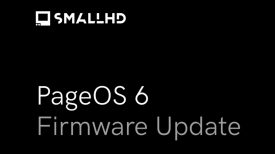The Aurora PowerGXND is the world’s first variable graduated neutral density filter. The PowerGXND features a variable hard transition graduated neutral density (GND) filter with a continuously variable range up to 5 stops (ND 0 – 1.5).
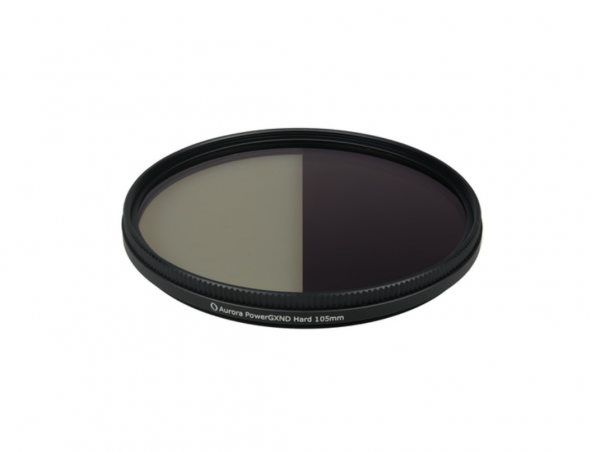
Graduated ND filters have traditionally been used to help maintain proper exposure in a high contrast scene when the dynamic range of a camera’s sensor is unable to capture the scene without the resulting image being under or overexposed. Graduated ND filters have only been available in fixed strengths, and it’s amazing to think that it has taken this long for someone to come up with a variable version. This concept looks like it may be a good solution for both video and stills shooters.
With the PowerGXND variable GND filter you just rotate the filter until you get your desired result. By using a slim adapter or mounting on a square filter system, the PowerGXND can be moved up and down to position the dark to bright transition area properly according to your needs.
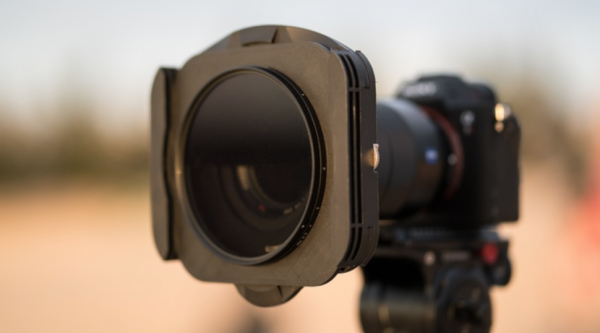
You do have to be aware that even though it’s variably adjustable, this isn’t a soft graduated neutral density filter, and you will get a hard edge where ever the middle of the filter is positioned.
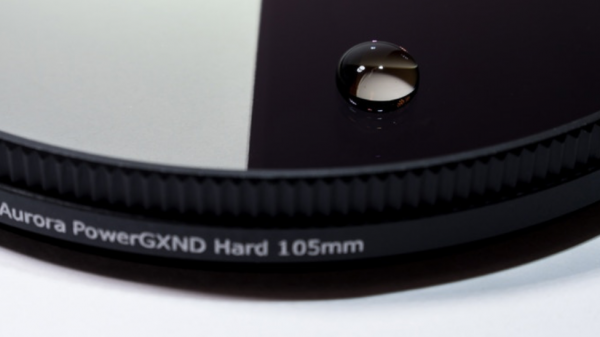
The PowerGXND is based on the PowerXND 2000 filter family the Aurora introduced in 2016, and it shares a lot of the same properties. The filter uses Schott B 270® i Ultra-White Glass and high-quality polarization film. It also has multi-layer nano coatings applied. These coatings are applied to the glass surfaces on both sides of the filter. Perfluoropolyethers (PFPE) are used as hydrophobic and oleophobic coating agent so the filter surfaces are able to repel water, soil, and dirt.
Hard Stops and Direct Reading Scale
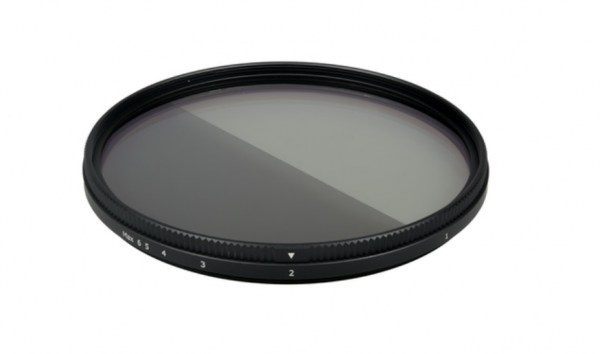
The PowerGXND features hard stops so that the filter can only rotate between minimum and maximum without overshooting the functioning range. The hard stop is integrated into the thin frame profile, just like in the original PowerXND 2000 filter design.
The PowerGXND features a brand new direct reading scale. This scale lets users quickly dial in a filter to the desired stop value.
Adapters and mounting
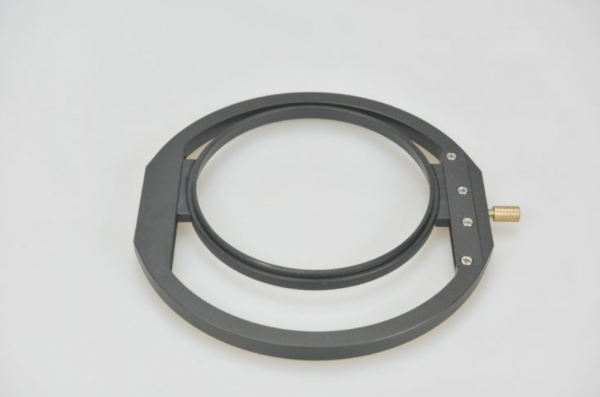
Aurora has two different options for mounting the filter to a lens. This first is a slim lens adapter that lets the PowerGXND filter rotate and move up and down to select the proper area for light blocking.
The slim adapter allows both filter thread and lens thread to be rotated freely and also locked. The PowerGXND filter can also be moved in straight-line in relation to the lens thread so users can place the filter transition area anywhere in a frame, just like what a square filter system can offer with rectangular GND filter but without the bulk or hassle of adding a square filter system.
To use the PowerGXND filter, Aurora provides an adapter plate for square filter systems such as the ones from Cokin, LEE, NiSi etc. The PowerGXND filter can be rotated and locked in the adapter plate while the plate can be moved within the square filter holder. This will allow users to adjust the brightness transition within the captured shot.
For users who do not have a square filter system Aurora also offers a simple ultra low profile square filter system along with the adapter plate.
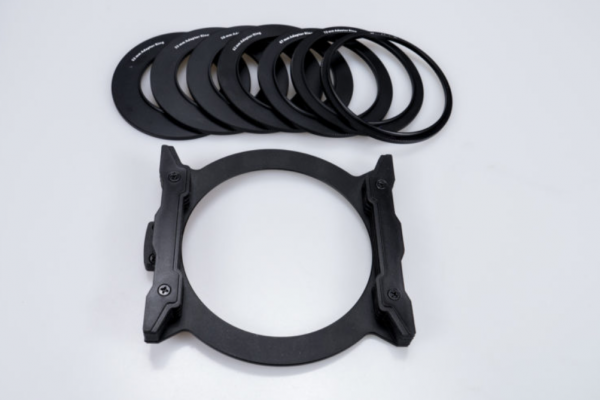
The three slot ultra low profile square filter holder is designed to reduce the distance of the lens surface to the first stack of square filters. This reduces potential vignetting caused by square filter systems with ultra wide angle lenses.
There are three ultra low profile square filter systems available:
130mm system – compatible with Cokin X-Pro and 130mm (width) square filters, adapter rings of 82, 77, 72, 67, 62, and 58mm included.
100mm system – compatible with Cokin Z and other 100mm (width) square filters, adapter rings of 62, 58, 55, 52, 49, and 46mm included.
75mm system – compatible with LEE Seven5 and 75mm (width) square filters adapter rings of 49, 46, 43, 40.5, 39, and 37mm included.
Specifications
GND Type: hard transition
Range: 0- 5 stops
Glass material: Schott B 270® i Ultra-White Glass
Available sizes***:
L – ⌀105mm for lens filter size of 82mm and less on a 130mm square filter system (Cokin X-Pro)
M – ⌀82mm for lens filter size of 62mm and less on a 100mm square filter system (Cokin Z and others)
S – ⌀62mm for lens filter size of 49mm and less on a 75mm square filter system (LEE Seven5)
*** Maximum lens filter size recommended for covering landscape orientation with transition line in 30% of frame height.
Slim Adapters
L – For ⌀105mm filter with lens filter thread size 82mm, free rotations on both filter and lens thread, and movement between filter and lens thread, included lens adapter rings of 77, 72, 67, 62, and 58mm.
M – For ⌀82mm filter with lens filter thread size 62mm, free rotations on both filter and lens thread, and movement between filter and lens thread, included lens adapter rings of 58, 55, 52, 49, and 46mm.
S – For ⌀62mm filter with lens filter thread size 49mm, free rotations on both filter and lens thread, and movement between filter and lens thread, included lens adapter rings of 46, 43, 40.5, 39 and 37mm.
Square Filter Adapters
L Plate – For using a ⌀105mm filter on a 130mm system (e.g. Cokin X-Pro)
M Plate – For using a ⌀82mm filter on a 100mm system (e.g. Cokin P)
S Plate – For using a ⌀62mm filter on a 75mm system (e.g. Lee Seven5)
Pricing
The Aurora PowerGXND is currently on Kickstarter and they have the following deals available to early adopters:
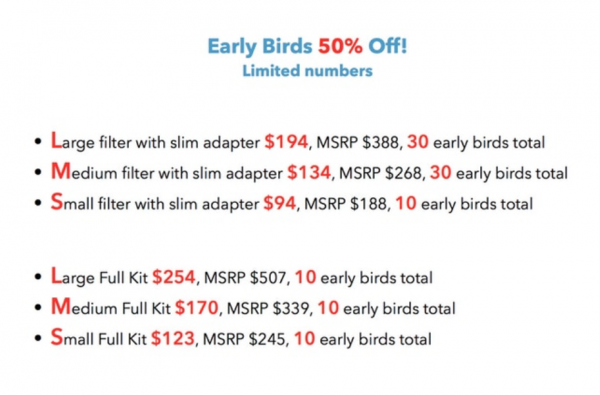
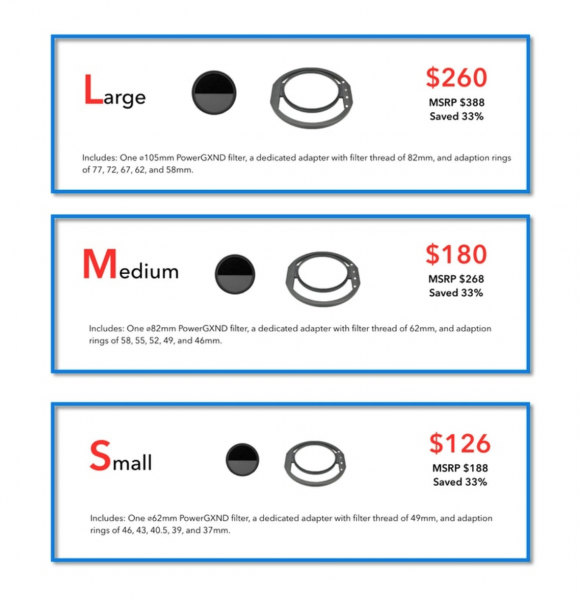
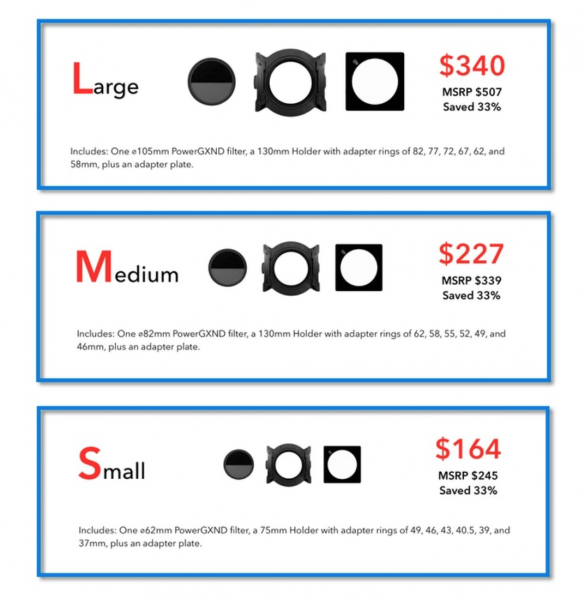
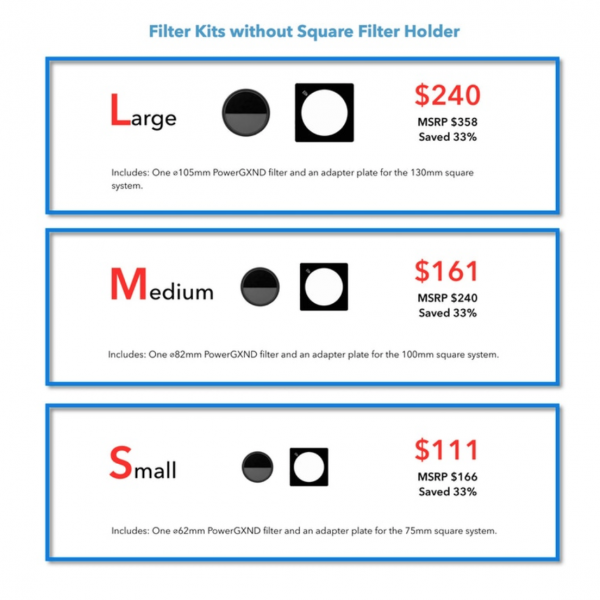
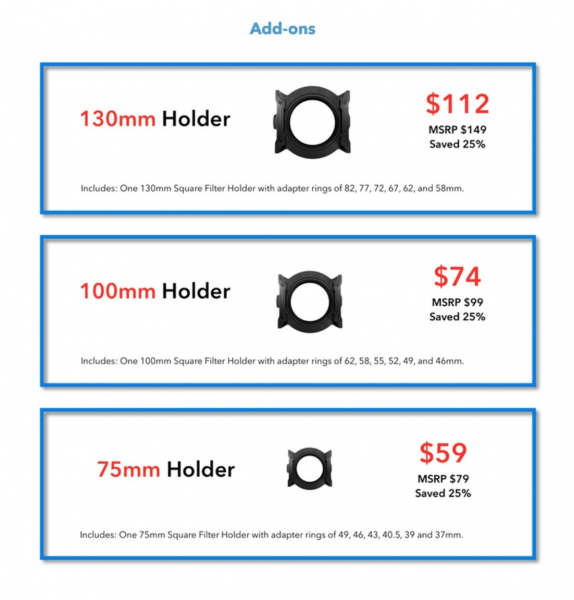
Aurora expects to be shipping the PowerGXND in May this year. What do you think about this concept? Would you use one? Let us know in the comments section below.





